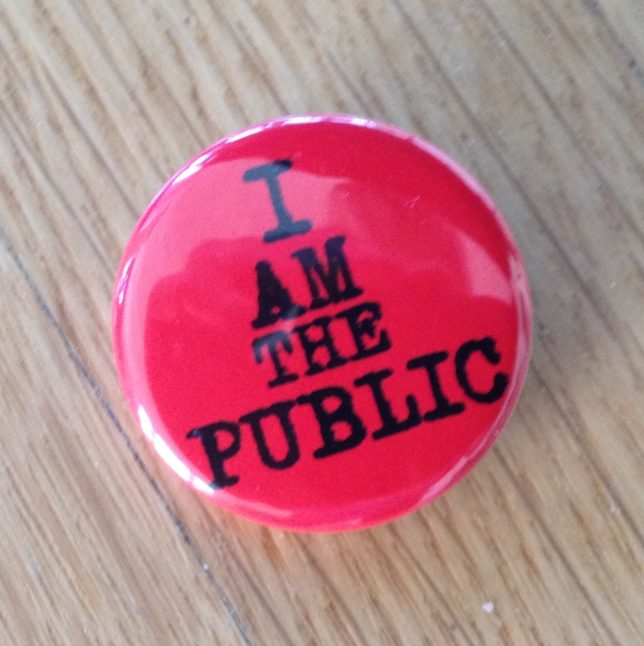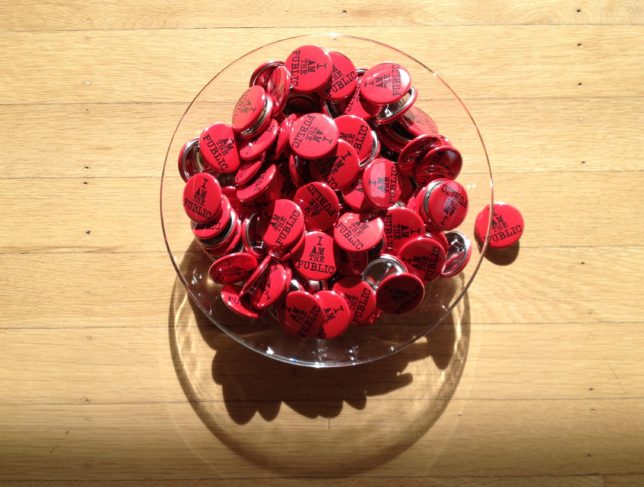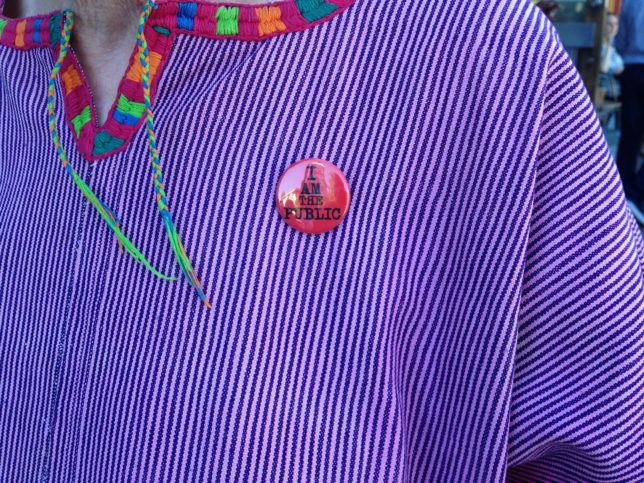“Come wade through history with me,” I wrote, hoping to entice students to apply for an internship with me. I’d been appointed to be Alum in Residence at the University of Washington School of Art + Art History + Design for the 2016-2017 academic year and had decided that one way to put this opportunity to use would be to get help organizing and inventorying the many boxes of files and ephemera I’d accumulated over the years. During my residency, five remarkable students worked with me.
Of the many projects that produced the boxes filling my storage unit I chose one and carted nine of the sixteen banker boxes of Arts Wire material to my office at the school. Arts Wire, which I founded in 1989, was an early online network for the arts community nationwide – artists, arts organizations, arts funders, state arts agencies, and more. It introduced many arts folks to this “new” communications technology and provided an essential national connection for us during the tumultuous challenges we faced during those years – the culture wars around censorship, the rise of the AIDS crisis, fierce congressional debates about arts funding, and the sometimes contentious rise of “multi-culturalism” (the term of the day).
The students tackled the job with enthusiasm. And they didn’t just inventory the material. As they went through it they also talked about what they found, both among themselves and with me. We considered what the contents meant, whether archives matter, and how what they learned connected with the world we know today. Their interest prompted them to create ancillary projects. Along with two exhibitions, an Instagram feed, and reflective essays, the students decided to produce a podcast series based on interviews with intriguing people they discovered in the files. David Mendoza was on their list.
David is a long-time advocate and activist on behalf of artists and was an important early member of Arts Wire. At about the same time that Arts Wire was gaining momentum, David was leading the charge against censorship as director of the new National Campaign for Freedom of Expression. Three of my interns – Karen Beech, Jessica Capó, and Lizzie Trelawney-Vernon – contacted David and conducted the interview. The hour-long conversation – with David in Bali where he now lives and we in Jessica’s apartment near the university – threaded its way through many of his experiences. His creation, in the 1980s, of a button with a message particularly caught the students’ imagination.

DAVID: I created that pin because I got so tired of people using the word “public” and saying, “I’m against public funding for the arts. I’m against public funding for this, or public support shouldn’t go for that.” At some debate I was in, I said, “Wait a minute! Iam the public!” I pointed to people in the room and said “Youare the public, and youare the public.” The anomalous idea that a public means someone who is not me or not many other people…I just wouldn’t accept that. So I created a pin that said, “I AM THE PUBLIC.” And we distributed it widely. People loved this pin because they knew they were not being included when the word “public” was used.
What public funding for the arts did, what the National Endowment for the Arts did, what the New York State Arts Council and many other arts councils did, was diversify the arts in America. They realized that not just a few major European-based institutions were the arts in America: there were all kinds of others. Just last night I was listening to PBS NewsHour and learned there’s a revival of Zoot Suit, Luis Valdéz’s play that he created with Teatro Campesino in California, which went on to Broadway and a movie. Now it’s being revived again. And once again, it has relevance, to the Chicano community especially. Teatro Campesino was supported by both the California Arts Council and the NEA. People who were known for their private philanthropy gave big money to what they liked. Nothing wrong with that, but there was nobody to give money to Teatro Campesino. That’s what public support for the arts did. And, that’s why we created that pin, “I AM THE PUBLIC.”
Everyone who wore that pin was part of the public. I’m telling you, it was amazing. I remember, for example, a Gay Pride March [in Seattle]. We were marching and had bags of them and were handing them out. People loved this pin! They got its message immediately. Then I’d see it on people all over Seattle.
JESSICA: I just want to chime in… Anne has one of these pins in the office. And when she told me the story about it, it really spoke to me and I tend to tell a lot of people about it. Personally, I am myself Hispanic and a lot of my co-workers are minorities as well, you know, Pakistani, Taiwanese. I mentioned this same pin to them, actually just today. I mentioned it to them in the art context but also in terms of what’s happening today. And they loved it, and they were just, like… YES, this is exactly it.
DAVID: Yes! Maybe your first activism after this podcast could be, just make some. I think it’s a very good thing to revive! They’re not expensive…just reproduce it. Just make it!
JESSICA: It’s so funny, I was just thinking about this today. After mentioning them to my co-workers, it was, wow! I just want to make more and start giving them to people. Just helping them realize they are part of this whole debate. They are the public. “Yeah! I am, and I really should have a bigger say in what’s going on.”
KAREN: It’s an affirmation of our own value. This understanding that, like, wait a second, I’m culpable. I’m responsible. And that means that I also have power and I have agency. That is really important! We so often become isolated in the sense that we think, well, it’s only my opinion. But the point is not that. The point is that my opinion is as valid as the “public’s” opinion, that everybody has an individual opinion, and that, all together, is what creates any group, right? Even on the scale of the country!
DAVID: And remember, you have to always be aware that when you hear someone talk about the “public,” they probably have an idea of it that doesn’t include a lot of people. They’re excluding part of the public.
JESSICA: Yeah, we need to revive this!
DAVID: Yes! I have one in my little treasure storage chest in Seattle. It’s time, it’s time again. We’ve come full circle with what’s happening right now.

AFTERWORD: At one of our weekly meetings a month or so after the podcast recording, the group of interns surprised me with several hundred brand-new pins. You can bet that one way or another, they’ll make sure David gets some of the new ones.

NOTES
Other related essays on my website include:
– Returning to my alma mater, after half a century
– Archaic social media – Arts Wire uncovered
– David Mendoza: The past half century
The interview with David Mendoza by Arts Wire interns is from a 2017 podcast series titled, “AND_NOW?” To listen to the podcast, click here, and scroll down to episode 6, “Golden Horseshoe.”
![]()